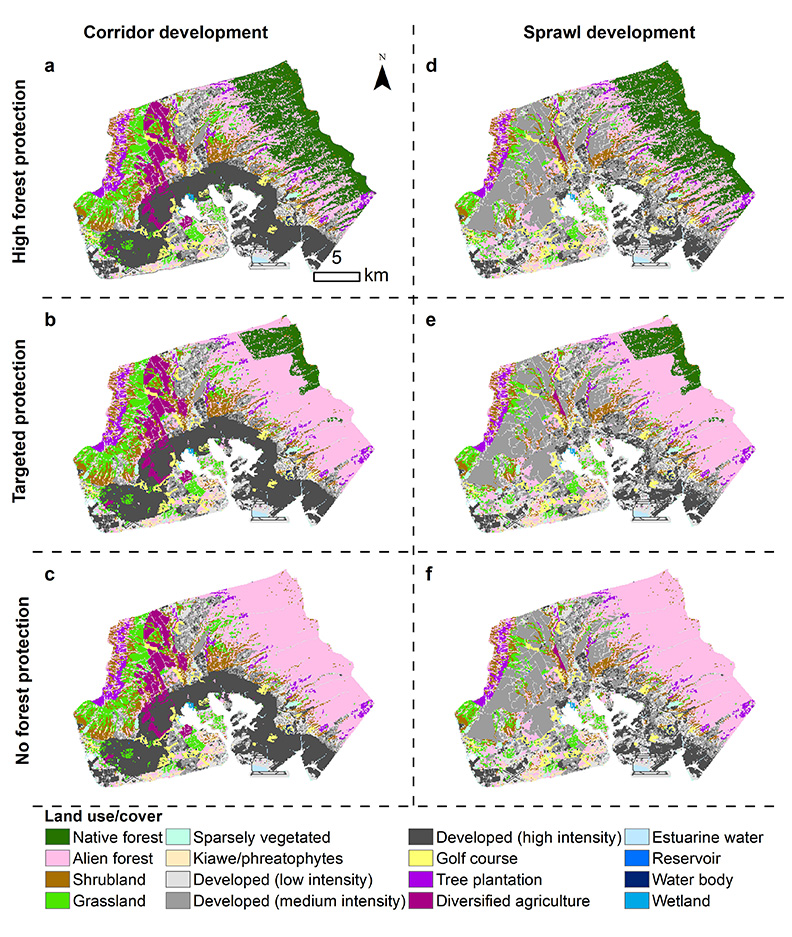SPONSOR:
National Science Foundation – EPSCoR’s ‘Ike Wai
PROJECT PERIOD:
2017 – 2021
COLLABORATORS:
Leah Bremer, Ahmed Elshall, Christopher Wada, Laura Brewington, Jade Delevaux, Aly El-Kadi, Cliff Voss, and Kim Burnett
ABSTRACT:
Sustainable groundwater management requires accounting for the interacting effects of land cover and climate change on groundwater sustainability and management. This study focuses on the most heavily-utilized aquifer in Hawaiʻi—the Puʻuloa (Pearl Harbor) aquifer. Using a groundwater simulation optimization approach, we will examine the effects of stakeholder-defined future watershed management and urban development land cover scenarios on groundwater recharge and sustainable yield. The sustainable yield estimates are then used to determine differences in groundwater replacement costs among land cover scenarios under two water demand scenarios in the context of a dry future climate (Representative Concentration Pathway (RCP) 8.5 mid-century). We find that land cover change has about half the influence of RCP 8.5 mid-century rainfall on groundwater recharge and sustainable yield, with watershed protection—through preventing the spread of high-water-use non-native species—having the most significant effect. Specifically, full forest protection results in a 7–11% (30–45 million liters per day) gain in sustainable yield compared to no forest protection, translating to substantial reductions in annual groundwater replacement costs. The type of urban development has a smaller effect; dense development increased sustainable yield by 0-3% (0-15 million liters per day) compared to sprawl development. Collectively, this study demonstrates the value of watershed protection on groundwater sustainability in the context of a drier future climate, providing insight for water and watershed management and policy in Hawaiʻi and other regions, particularly where species invasions threaten source watersheds.
Project Publications:
Bremer, Leah, Ahmed S. Elshall, Christopher A. Wada, Laura Brewington, Jade M.S. Delevaux, Aly I. El-Kadi, Clifford I. Voss, and Kimberly M. Burnett. 2021. Effects of land-cover and watershed protection futures on sustainable groundwater management in a heavily utilized aquifer in Hawaiʻi (USA). Hydrogeology Journal Open Access, https://doi.org/10.1007/s10040-021-02310-6
Brewington, L., L.L. Bremer, K. Rotzoll, K., and A.S. Elshall. 2020. Data of effects of land cover and watershed protection futures on sustainable groundwater management in Hawaiʻi (version v1.0). Zenodo. http://doi.org/10.5281/zenodo.3930544
Bremer, L.L., L. Brewington, K.M. Burnett, C.A. Wada, U. Miyajima, and D. Wade. 2018. Land use scenarios for the Pearl Harbor aquifer [PDF]. UHERO report. https:// uhero.hawaii.edu/wp-content/uploads/2020/07/LandUseScenarios-PearlHarbor.pdf
PRINCIPAL INVESTIGATOR


